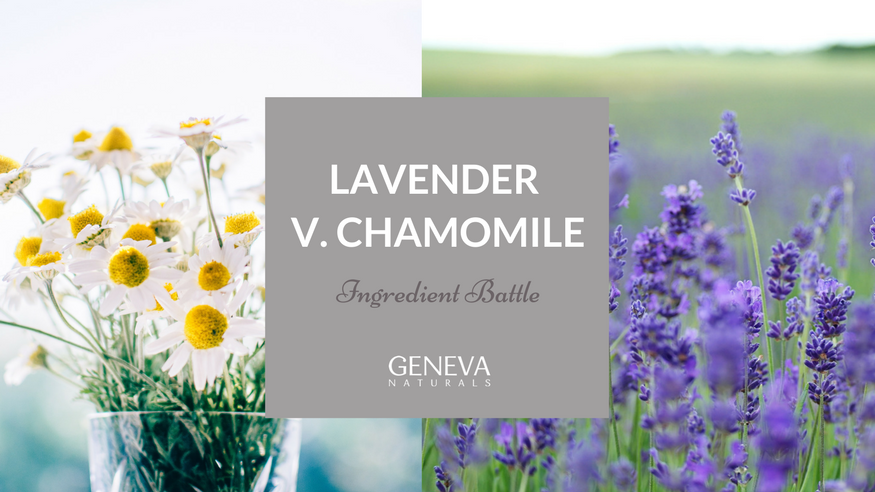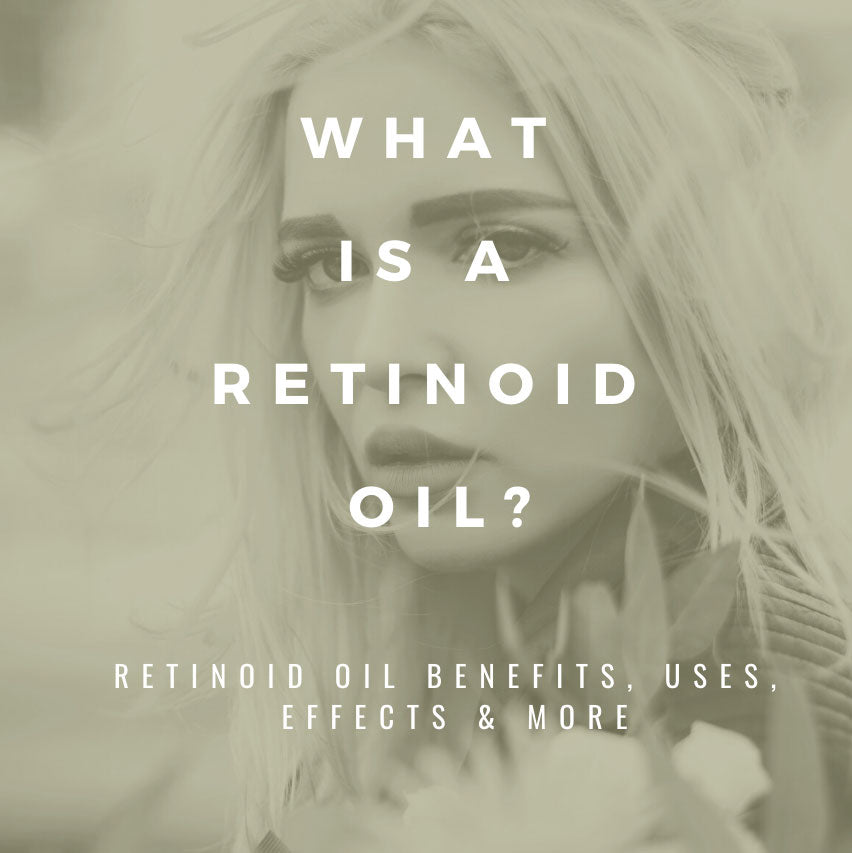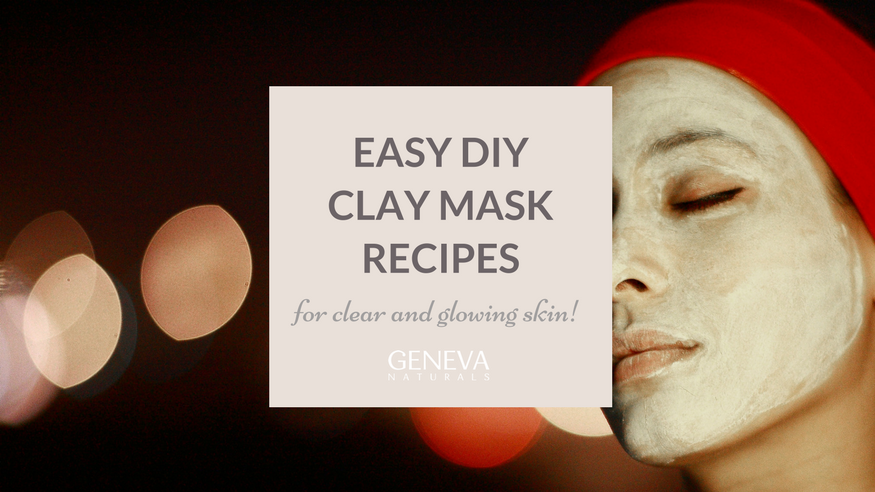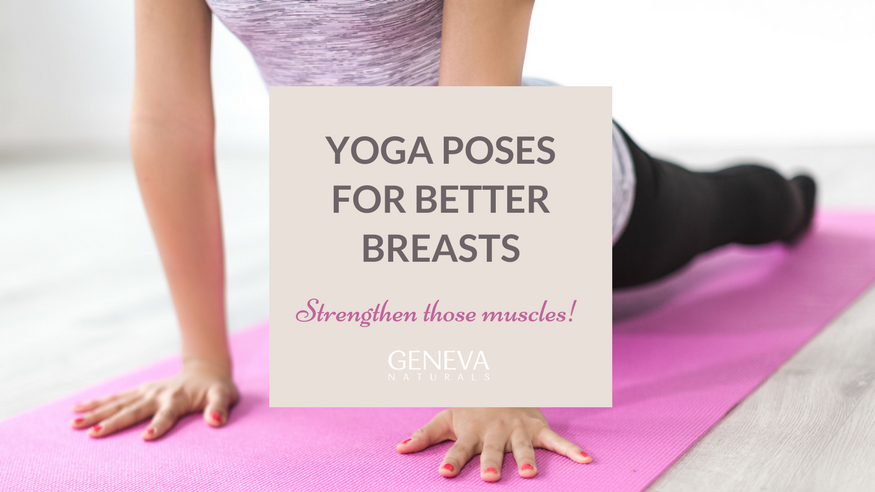Ingredient Battle: Lavender v. Chamomile

Lavender
What is it?
Lavender is a small bush that grows three to four feet high. It produces fragrant pale purple flowers and long, narrow, pale green leaves. It is part of the mint family and is native to Mediterranean countries and grows well in temperate climates.
Why do people love it?
Many people enjoy the fragrance of lavender. Ancient Romans used lavender to scent their bathwater and today the aroma of lavender is used in perfumes, potpourris, and laundry detergents. There are also surprising skin care benefits of lavender.
Benefits
Antioxidant
Lavender is an antioxidant that fights against free radicals, which damage the cells in the body and can lead to disease and the disruption of the immune system. As an antioxidant, it also prevents the irritation caused by pollutants on the skin.

Fights Acne
Oily skin and dead skin cells tend to clog and infect the pores. Lavender is a disinfectant and astringent often used as an acne treatment. Astringents remove excess oil, or sebum, reducing breakouts. As a disinfectant, lavender helps to clean the pores, removing bacteria that often causes pimples, swelling, and redness.
Repairs Damaged and Aging Skin
The antioxidant and antimicrobial properties of lavender help to heal dry skin, reduce acne scars, and promote radiant skin. Lavender also helps to reduce signs of aging such as age spots, wrinkles, and bags under the eyes.
Improves Sleep
Lavender has a calming effect and has been shown to decrease heart rate and blood pressure, promoting relaxation and deeper sleep. Good sleep is important to the health of your skin, which explains the term “beauty sleep”. While you sleep, your body recovers, repairs itself, and boosts blood flow to the skin. Improved sleep can reduce wrinkles and puffy eyes and help you wake to a healthy glow.
How to use it?
One of the most common ways to use lavender is in essential oils. Lavender is used aromatically when diffused into the air, used in a perfume, or as a non-toxic air freshener. Lavender is also used in a variety of skin care products including anti-aging serums, lotions, lip balms, and creams. Watch this video from Howcast to learn how to use Lavender!
Chamomile
What is it?
Chamomile is a perennial plant that grows about 12 inches high. Its stem is slender and high and has many branches. Its flowers resemble daisies but smell sweet and have a bitter taste.
Why do people love it?
One of the biggest perks of chamomile is that it is very versatile. It has been used for centuries to promote sleep, calm an upset stomach, reduce muscle spasms, fight allergies, manage anxiety, and treat skin disorders.
Benefits
Anti-Inflammatory
Inflammatory skin diseases are the leading problem reported in dermatology. Acne is a common inflammatory disease that affects up to 50 million Americans each year. Other inflammatory skin diseases include eczema, rosacea, and psoriasis. Chamomile contains flavonoids, which have anti-inflammatory properties that help to reduce inflammation.

Antiseptic
The antiseptic properties of chamomile help protect the skin and are often used to clean and protect wounds. As an antiseptic, chamomile prevents bacteria from overgrowing your skin’s defenses. This prevents infections such as a staph infection or impetigo.
Treats Insomnia
One of the most well-known benefits of Chamomile is that it is a great sleep-inducer. Chamomile is often praised as one of the best medicinal herbs for reducing stress and inducing relaxation. Some people combine chamomile and lavender for optimal results. Chronic sleep loss leads to dark circles under the eyes, fine lines, and dull complexion. Lack of sleep also causes your body to release more cortisol, a stress hormone that breaks down collagen and makes your skin lose its elasticity.
How to use it?
Chamomile is often used in the form of an essential oil or dried herb. Chamomile is often used orally, as with chamomile tea, and topically in lotions, creams, and serums.
Want to get the benefits of both Lavender and Chamomile? Pin me!

Also in Geneva Naturals

What Is A Retinoid Oil? Retinoid Oil Benefits, Uses, Effects & More

DIY Clay Mask Recipes for Clear Skin



